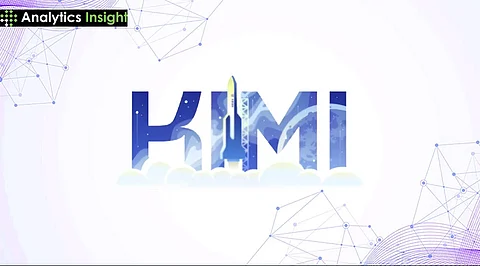

In an era where artificial intelligence is rapidly transforming services across industries, economies, and global power dynamics, one Chinese company is sending shockwaves with a model that defies Silicon Valley’s grip on the global high-tech market. Get to know Kimi K1.5, the newest large language model (LLM) from Moonshot AI, a Beijing-based firm funded by Alibaba and established in 2023. Despite its comparative novelty, Moonshot has quickly gained global prominence, thanks to Kimi K1.5’s cutting-edge architecture, multimodal nature, and a staggering 128,000-token context window.
Coming in January of 2025, Kimi K1.5 is more than a technical development. It’s a manoeuvre, one that signals not just China staying in line behind AI innovation but actually taking up the baton to establish new standards. Not only with open access and its high-performance capabilities, but also through its flexibility for use across text, image, and code platforms, Kimi K1.5 is already drawing the attention of international AI leaders.
At its core, Kimi K1.5 is a technical achievement, especially considering its innovative approach to reinforcement learning. Unlike models that rely on resource-intensive approaches such as Monte Carlo tree search or sophisticated reward modelling systems, Moonshot’s developers took a more refined approach. Through online mirror descent and length penalties, Kimi K1.5 maximises its outputs without requiring extensive simulations or manually crafted feedback loops.
This method not only makes the model leaner and quicker to train but also aligns with an emerging pattern in AI: creating optimized models that do more with less. This thriftiness is what differentiates Kimi, and a reason why it’s quickly taking hold beyond China.
Another defining feature of Kimi K1.5 is its massive context length, 128,000 tokens. For context, OpenAI’s GPT-4o, a leading model in the U.S., supports 128K as well, but most public models still linger between 32K and 65K tokens.
This increased memory capacity enables Kimi to review entire books, research papers, or codebases at once. In practice, that’s a breakthrough for law firms sifting through cumbersome contracts, programmers debugging massive projects, or scholars reading works of literature by the stack. Kimi doesn’t lose its train of thought halfway through a document; it has consistency, context, and relevance from beginning to end.
Though most LLMs are still largely text-based, Kimi K1.5 is built to excel in a multimodal environment. It is capable of processing text, images, and code simultaneously, which allows it to perform more complex tasks, such as analysing visual information, creating descriptive breakdowns, or even solving mathematical equations with visual inputs.
This opens up applications in sectors like education, medicine, design, and finance, where data isn’t always neatly packaged in paragraphs. In a world that increasingly blends visual and verbal information, Kimi’s multimodal strength makes it highly adaptable to real-life complexity.
The Kimi K1.5 isn’t all show; in addition to being big-time bragging material, it’s also backed by metrics. On the AIME (American Invitational Mathematics Examination) test, Kimi K1.5 earned an impeccable score of 77.5 points; on the exam MATH 500, its score was 96.2; on competitive programming stage Codeforces, a 94% or better ranking position.
These are not marginal scores; Kim K1.5 is placed in the same class as GPT-4, Claude 3.5 Sonnet, and Gemini 1.5 Pro. In several logic, programming, and mathematical tasks, Kimi surpasses these Western giants, demonstrating its potential as anything but a local model; it’s a global player.
One of the most compelling features of Kimi K1.5 is its openness. While most top-performing LLMs are behind paywalls or enterprise APIs, Kimi is available to use on its official platform for free. This open-access ethos is likely to speed up innovation in developing markets and among individual developers who would otherwise be priced out of AI experimentation.
In addition, the Moonshot AI team has also released portions of the model’s architecture and benchmarks publicly, enabling the wider AI community to investigate, modify, and criticise the model. By doing so, Moonshot is not merely creating a product; it’s creating an ecosystem.
As AI becomes a battleground for technological supremacy, Kimi K1.5 is a turning point in China’s AI drive. No longer satisfied to adopt Western blueprints, firms such as Moonshot are now developing solutions that compel the world conversation to change.
From its technical architecture to its public availability, Kimi K1.5 is designed for scale, speed, and social impact. It demonstrates that world-class AI can be produced anywhere, and that the next innovation wave might not be headquartered in Silicon Valley, but in Beijing, Bengaluru, or elsewhere.
For Kimi K1.5, it’s more than a model-it’s the future of AI processing. Deep thinking with multimodal fusion, open access, and lean-reinforcement learning creates that mould-breaking, moving the industry forward. As the race to arms heats up in AI, one thing is certain: no single country or firm has a monopoly on it; future development will belong to those who reimagine what AI can and should do. And Moonshot’s Kimi K1.5 is doing just that, rewriting the game rules at the same time.
